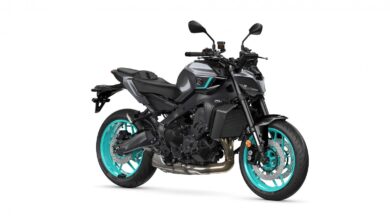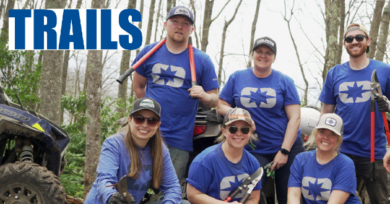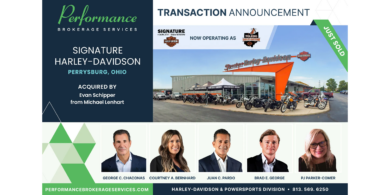How to retail all of those new products from Indy – March 13, 2006
INDIANAPOLIS — By stepping into the powersports industry, some big box stores haven’t exactly endeared themselves to the nation’s dealerships.
But if you’re a dealer, there is reason to visit your rivals — to check out and then adopt some of their retail merchandising practices. That was the message given by two Tucker Rocky retail specialists to two overflow seminar audiences at the 2006 Dealer Expo.
Big-box store retail practices and successes were explained along with a simple message about inventory: It’s going to take work to turn a profit. But what a potential profit there is. Americans spent $500 billion in 2004 on luxury items, everything from vehicles to plastic surgery to Starbucks lattes, said Christy Michaud, a merchandising and retail environment specialist for Tucker Rocky. That luxury spending amount is expected to double in three more years.
“America shops as a pastime and bargain hunting to some is an Olympic sport,” she said.
Michaud and fellow retail specialist Jennifer Robison preached product placement and presentation, two best practices of big-box stores.
Those best practices include the regular rotation of products, especially in regard to seasonal shopping. Supermarkets and other large retailers have made this a constant practice. Who hasn’t seen pumpkins in supermarkets at the beginning of fall?
And yet, many dealers don’t make the effort to rotate their product lines.
“It’s getting better,” Michaud said of dealers rotating their inventories. But the industry as a whole is “behind the times in comparison to big-box retailers.”
Organization of products also is part of the big-box placement pattern. Supermarkets make it easy on the consumer by having similar products all in one area. But, the Tucker Rocky retail specialists said it’s not uncommon for powersports dealers to place certain off-road accessories, like gloves, in an area separated from other off-road equipment.
Effective organization also could include overhead signs, which easily direct consumers to the products they’re looking for.
Equally important for dealers is to provide the right buying atmosphere.
“If there’s no excitement in your store, make it,” said Michaud. She advised doing “anything you can do to bring the outside in.”
Again pointing to big box stores, she used the example of Cabela’s and Bass Pro Shops, outdoor product stores that have eye-catching mountain or creek displays as centerpieces to their stores.
Dealerships can accomplish the same outdoor images in a smaller way.
Michaud showed how a Tennessee dealership used the mountain effect in a smaller dimension. Other dealerships use white quilt batting, an inexpensive product found at fabric stores, to mimic new snow around their new snowmobiles to create the outdoor look.
Aroma is another tactic some retailers use. Some car dealerships, fitness gyms and hotels use scented air, Michaud said. “You’re romanticizing the customer,” she said.
In-store information systems also can be effective. A study showed ads shown on in-store plasma TVs increased sales of that particular product by up to 61 percent. That’s why, Michaud said, Wal-Mart will be installing 100,000 plasma TVs in its stores in the future. psb




